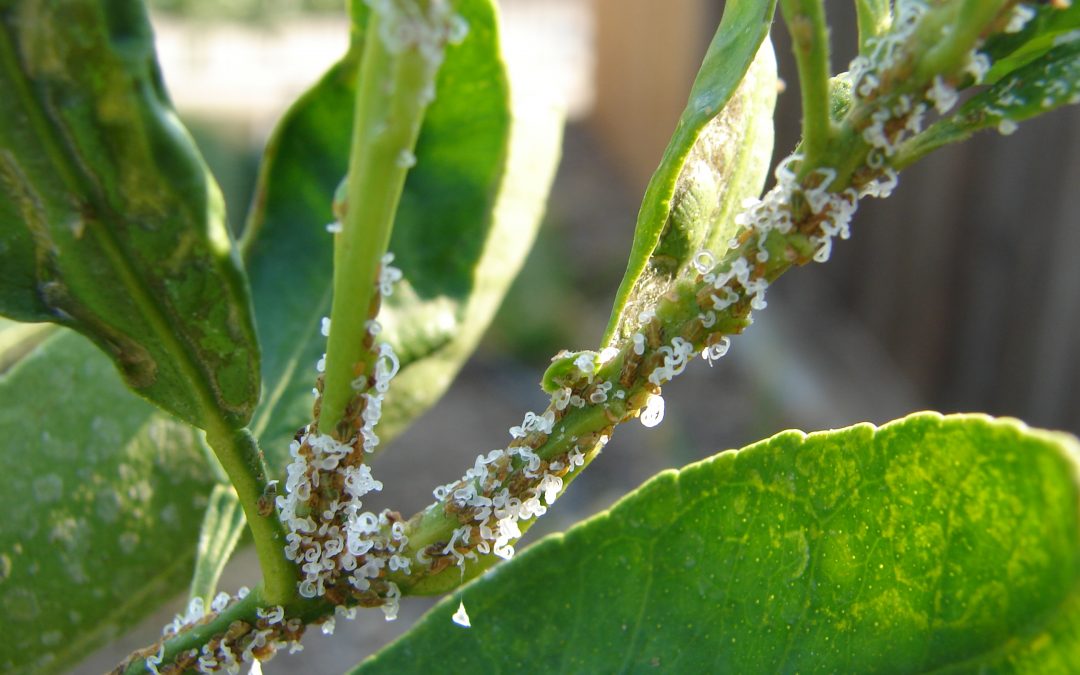Citrus trees are a popular choice for home landscaping due to their beauty and fruit production. However, they are also susceptible to infestation by the Asian citrus psyllid (ACP). This tiny insect feeds on the sap of citrus trees, causing leaves to yellow and drop off. In severe cases, ACP infestation can kill a tree. Fortunately, there are several things that homeowners can do to prevent or control an infestation. First, it is important to inspect citrus trees regularly for signs of ACP activity. Second, remove any ACP-infested leaves or branches from the tree. Finally, keep trees well-watered and fertilized to help them recover from an infestation. By following these simple steps, homeowners can enjoy their citrus trees for years to come.
Table of Contents
A Brief Guide to Asian Citrus Psyllid in Home Landscapes
Do you grow lemons, oranges, or limes in your backyard? Do you cultivate ornamental trees or shrubs in the Rutaceae family including orange jasmine or Indian curry leaf?
If these trees or plants are growing on your property, be on the lookout for signs of the Asian citrus psyllid (ACP), and be prepared to act if you find any signs of this insidious plant pest. Here’s what you should know about ACP and your backyard citrus plants.

Tiny ACPs Pack a Big Punch
ACP may be a tiny insect no larger than your average aphid, but the small, mottled brown pest is considered a top threat to citrus trees all over the globe. The 1/8- to 1/6-inch adult ACPs only live a few months, but each female adult can lay hundreds of eggs on a single tree.
Hatched nymphs feed on soft foliage like new leaves; the ACP nymphs extract vital sap from trees in order to produce honeydew. Tips of foliage twist or turn dark brown from the psyllids’ feeding.
The true threat of the ACP is its ability to infect trees with Candidatus Liberibacter asiaticus. This bacterium is associated with a disease commonly called citrus greening or huanglongbing (HLB) disease. HLB disease is a fatal tree condition that can kill infected trees in as little as five years. Affected plants must be identified and removed promptly and properly.
California Counties Are Under ACP Quarantine
ASP and HLB disease originated in India or eastern Asia and spread to other citrus-growing regions of the world. The ACP was first detected in Florida in 1998 and rapidly spread throughout Florida. The first ACP infestation in California occurred in 2008, and the pest is now a problem throughout Southern California.
Active quarantines (as of this writing) for ACP are issued for the following counties around (and including) San Diego County:
- Riverside
- Imperial
- Orange
- San Bernardino
- Los Angeles
- Ventura
- Kern
Virtually all counties in Southern California are under mandatory quarantine for ACP. Don’t move or ship any citrus products out of your county if you’re within the quarantine zone. Avoid purchasing nursery stock or grafted citrus from affected counties unless you know the nursery has an active, USDA-approved ACPprevention program.
You Can Help Stop ACP
If you have any backyard citrus plants, inspect your trees at least once a month for signs of ACP infestations, according to Western Farm Press. Your tree service can inspect your trees for you if you aren’t sure how to spot the earliest signs of ACP infestation.
Look for the following signs of ACP activity on your citrus trees:
- Yellowing leaves
- Twisting and curling leaves
- Unevenly ripened fruit
- Yellow-orange eggs in folded young leaves
- Tiny yellow nymphs with white tubules
ACP nymphs are found in the flowers, immature leaves, and soft stems of citrus plants. The adult ACP feeds at a 45-degree angle, but the adult ACP is unique in that its head is positioned lower than its back end while feeding.
Your tree service can advise you on the safest ways to remove affected citrus from your property. In some cases, you must notify agricultural officials about the presence of ACP. Some tree service professionals will contact state officials for you.
Even if no ACP signs have been detected on your property, San Diego and the surrounding counties are under quarantine rules, including proper disposal of citrus-tree debris. If you trim or prune your own citrus trees, let the clippings dry out completely before discarding the debris. You can also double-bag clippings and citrus-tree debris to comply with citrus-tree-waste rules.

